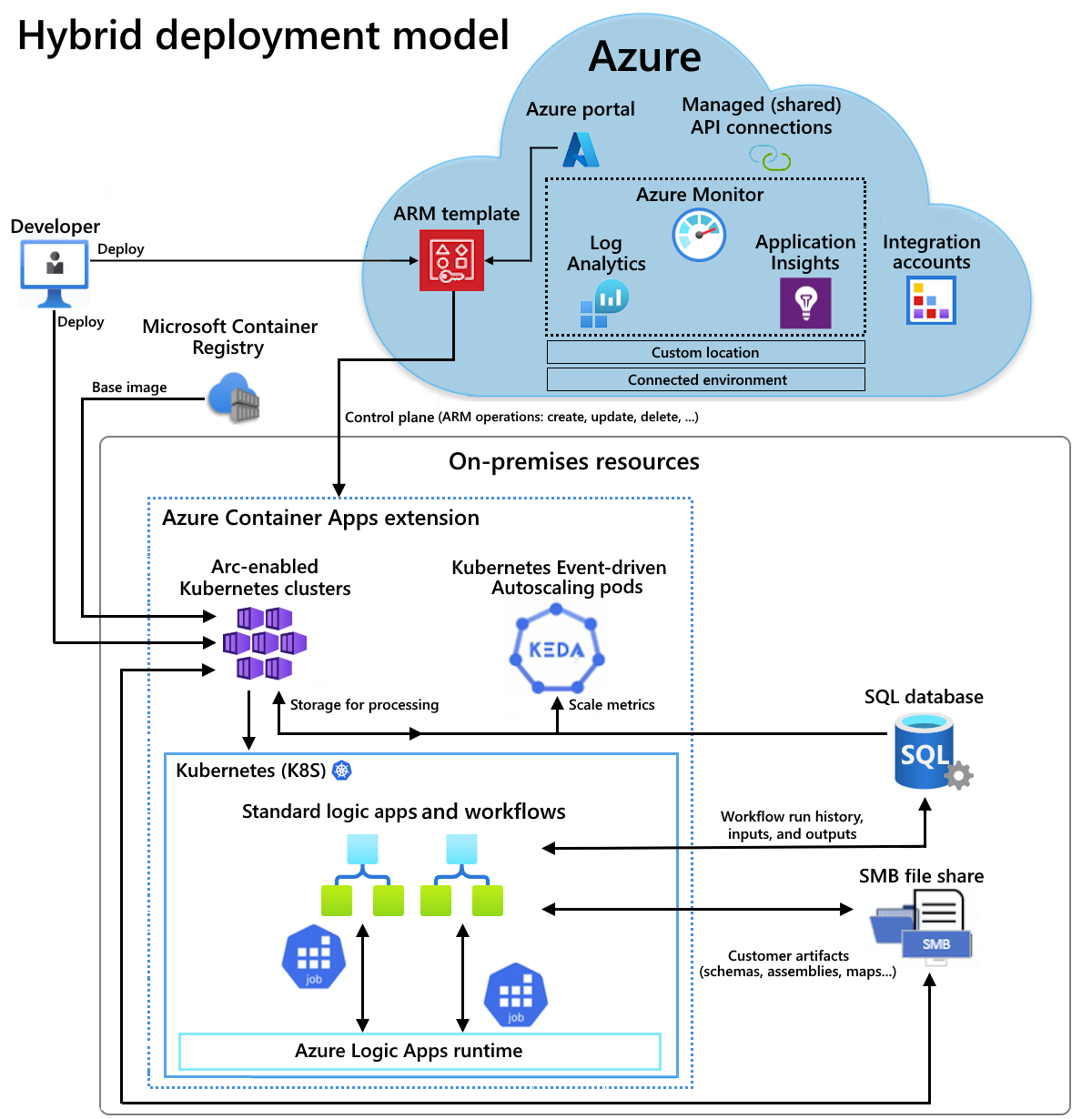Streamlining Hybrid Integrations with Azure Arc-enabled Logic Apps
By Anshul
- 4 minutes read - 652 wordsStreamlining Hybrid Integrations with Azure Arc-enabled Logic Apps
Introduction
In today’s rapidly evolving IT landscape, businesses are seldom operating fully in the cloud or solely on-premises. Most modern enterprises leverage hybrid architectures, combining cloud-native solutions with existing on-prem or multi-cloud investments. Azure Arc-enabled Logic Apps have emerged as a powerful bridge that enables seamless integration across disparate systems through automated workflows—consistently, securely, and at scale. For organizations needing to maintain regulatory compliance, low latency, or data residency in particular geographies, this capability is critical. In this blog, we’ll explore how Azure Arc-enabled Logic Apps unlock unified integration and automation in hybrid scenarios, and provide a hands-on walkthrough to help you get started.
Reference link: Azure Arc-enabled Logic Apps Overview
What Are Azure Arc-enabled Logic Apps?
Azure Logic Apps is Microsoft’s cloud-based integration platform as a service (iPaaS), allowing developers and IT pros to automate business processes, orchestrate critical data flows, and integrate with hundreds of SaaS and on-premises applications. With Azure Arc, Microsoft lets you deploy Logic Apps Standard workflows as containers to any infrastructure running Kubernetes—on edge, on-prem, or in other clouds (e.g., AWS or Google Cloud)—while maintaining unified management and experience from Azure.

Key Benefits:
- Flexible deployment: Run Logic Apps in virtually any Kubernetes cluster, anywhere.
- Unified management: Monitor, deploy, and secure workflows from the Azure portal, regardless of their physical location.
- Enhanced security and compliance: Keep sensitive data and workflow automation on-premises or within regulated geographies to meet local legal, contractual, or regulatory mandates, while benefiting from Azure’s cloud-born governance.
- Consistent developer experience: Use the same Logic Apps Designer, VS Code extension, and ARM/Bicep or Terraform deployment pipelines as you would for cloud-native workflows.
Architecture Overview
Below is how it will fit into your architecture:
+----------------------+ +-----------------------+ +----------------------+
| On-prem Systems | <====> | Arc-enabled K8s | <====> | Azure Cloud |
| & Data sources | | (Logic Apps Std) | | (SaaS, PaaS, APIs) |
+----------------------+ +-----------------------+ +----------------------+
| | |
Local Apps Logic App Connectors MS Services
Getting Started: Deploying Logic Apps to Arc-enabled Kubernetes
Prerequisites
- An active Azure subscription.
- An Arc-enabled Kubernetes cluster (can be AKS, on-prem, or 3rd-party cloud). Register your cluster.
- Install the Logic Apps extension for Azure CLI:
az extension add --name logic
- The Logic Apps VS Code extension (optional but recommended for local development).
Step-by-step
-
Connect Your Kubernetes Cluster to Azure Arc
- Register your K8s cluster in Azure Arc via portal or CLI:
az connectedk8s connect --name <YOUR_CLUSTER_NAME> --resource-group <YOUR_RESOURCE_GROUP> -
Develop and Run Logic Apps Workflows
- Design workflows locally with the Logic App Designer and deploy to Arc-enabled clusters.
- Workflows can access both local (on-prem) and cloud (SaaS, REST APIs, Office 365) services through standard connectors.
- Managed connectors can be hosted fully on-prem (using ISE endpoints) or in the cloud.
-
Monitor and Manage
- Use Azure Monitor, Log Analytics, and Application Insights for unified monitoring and troubleshooting, regardless of the Logic Apps’ location.
Pro Tips and Advanced Scenarios
- Hybrid Data Sovereignty: Keep process and data flows entirely local for sensitive workloads (e.g., healthcare, finance) while still automating tasks with SaaS.
- Edge Automation: Automate data flows from sensors, IoT gateways, or retail sites and process them locally, only pushing necessary data to the cloud.
- Branch Office Orchestration: Orchestrate decentralized business logic across multiple remote clusters, all governed and updated from a central cloud console.
- Integration across clouds: Use Azure Arc-enabled Logic Apps as a bridge for integrating AWS/GCP workloads with Azure services.
Conclusion
Azure Arc-enabled Logic Apps empower organizations to bring automation and integration to any infrastructure, making hybrid and multi-cloud solutions more practical and secure. Whether you must comply with strict regulatory requirements, optimize for latency, or keep business-sensitive data within local boundaries, Arc-enabled Logic Apps provide a consistent and governed platform for modern workflows.
Please note, as of today this feature is still in Preview.
References: